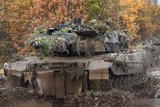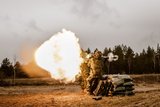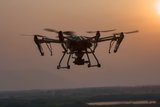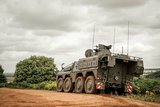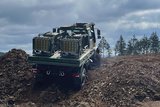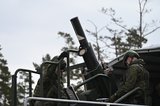Do I require a Respiratory Escape Device? (Sponsored)
This article is brought to you by Avon Protection.
Individuals who are routinely subjected to particulates, gases or vapors which are harmful to the respiratory tract will deploy suitable Respiratory Protective Equipment (RPE) and other Personal Protective Equipment (PPE) to ensure they are suitably protected from the threat at hand. The presence of harmful substances occurs in a range of workplace professions, for example in paint shops which therefore require the selection of appropriate RPE. Often in these cases, the threat substance is known and suitable protective equipment can be selected to allow work to be conducted safely. However, in certain situations, the potential for a release of materials hazardous to health means organisations and agencies typically develop an Emergency Response Plan, consisting of a means to protect and safely evacuate all affected individuals.
Adapting protection to meet changing threat profile
Increasingly, respiratory protection is at the forefront of people’s minds due to the everchanging threat profile. In the last decade, there has been an increased concern about the potential for a terror attack releasing a chemical or radiological agent.
However, these threats are not confined to only deliberate releases. Economic development has meant the presence and transportation of hazardous materials have become more widespread globally due to increasing numbers of industrial facilities and the associated waste being produced and subsequently transported cross-country. The increasing volumes and geographic spread of Toxic Industrial Chemicals and Materials (TICs/TIMs), leads to a greater potential for an accidental release of these materials in both rural and urban communities.
Large-scale incidents of a Chemical Biological Radiological and Nuclear (CBRN) nature generally occur without warning meaning initial first on scene response is likely to be conducted by front-line emergency services personnel rather than specialised units, particularly in cases where the threat is unknown.
Consequently, emergency services have expressed a desire to be prepared for any potential threat and investigate and action the procurement of CBRN protection to all emergency personnel. For this kind of respiratory protection to be successful, it needs to be low-profile, simple to use with a quick don time as well as cause no interference with existing equipment utilised.
The Capitol riots in January 2021 shocked the world as it came under attack and threatened the safety of the lawmakers inside. Few could foresee such an event taking place, however, it demonstrated the importance of being prepared. With rioters close to breaching the doors to the Senate, escape hoods were distributed and deployed to law makers and politicians housed inside to protect against any airborne threat such as tear gas or any unknown substance that may be released by rioters.
What is the difference between an escape hood and traditional respirator?
A respiratory escape device is designed to provide a period of protection to enable a safe escape from the threat at hand. A key differentiator of an escape device, such as an escape hood, is it is designed and approved by certifying bodies only for escape. Whereas typical Air Purifying Respirators (APRs) are approved by certifying bodies to be used in the workplace for the completion of tasks and job roles, Air Purifying Escape Respirators (APERs) are approved only for the evacuation of a hazardous environment. APERs, like the CH15 occupy a small footprint allowing them to be carried at all times, with no maintenance, minimal training and no annual fit testing meaning they offer a compact, potentially lifesaving device which they can use to escape the incident area and subsequently regroup at a safe zone.
Portable escape devices
Avon Protection, a world leader in CBRN respiratory protection recently launched the CH15 escape hood. The CH15 is a revolutionary, ultra-thin, single size respiratory device that provides a minimum of 15 minutes of respiratory vision and facial protection against Chemical, Biological, Radiological and Nuclear threats.
The CH15 is a development driven following an emerging requirement from specialist users to provide instant protection from all CBRN materials when in a live threat scenario. The CH15 was developed in conjunction with The Combating Terrorism Technical Support Office (CTTSO), in order to provide rapid deployment respiratory protection for specialist users and protective detail.
Offering a different approach to carrying respiratory protection, Avon Protection’s CH15 provides what no other traditional respirator can, a low profile, lightweight, one size fits all solution that is small and light enough to be carried at all times. This unique solution means the CH15 is on hand for the unexpected.
The CE approved CH15 compliments Avon Protection’s leading respiratory protection portfolio, adapting proven technology to create their most compact CBRN protection device to date.
To learn more about the CH15 visit CH15 - Military
More from Industry Spotlights
-
![De-Risking the Future: Manufacturing Certainty for Unmanned Systems]()
De-Risking the Future: Manufacturing Certainty for Unmanned Systems
How strategic manufacturing partnership solves the industrialisation triad — Scale, Compliance and Cost — for hyper-growth defence tech innovators.
-
![Battlefield mobility, made in the UK]()
Battlefield mobility, made in the UK
How does Britain ensure that we can preserve the lives of our soldiers and allies – now and in the future – with homegrown innovation and resilient domestic manufacturing? At Pearson Engineering, we are proud to be a central part of the answer to this increasingly important question.
-
![Strengthening Baltic defence capabilities]()
Strengthening Baltic defence capabilities
How Latvia is bolstering its territorial defences, industrial capacity and international cooperation with Dynamit Nobel Defence’s SKORPION2 Remote Mining System.
-
![Barco’s vision to trust: from past to future]()
Barco’s vision to trust: from past to future
Barco’s story is one of constant evolution enabling more immersive, reliable, and future-ready training experiences.
-
![How are next-generation ejection seats helping pilots when they need it most?]()
How are next-generation ejection seats helping pilots when they need it most?
The ACES 5 ejection seat from RTX’s Collins Aerospace introduces new, innovative and patented technologies to help save lives.
-
How Patria TREMOS redefines battlefield mobility
The war in Ukraine has made it clear: the battlefield waits for no one. Military operations now take place in fast-paced environments, and speed is not just about the fight itself – it is about the entire ecosystem of warfare.










